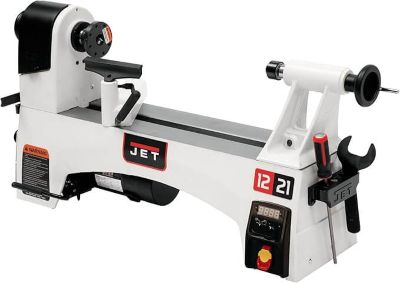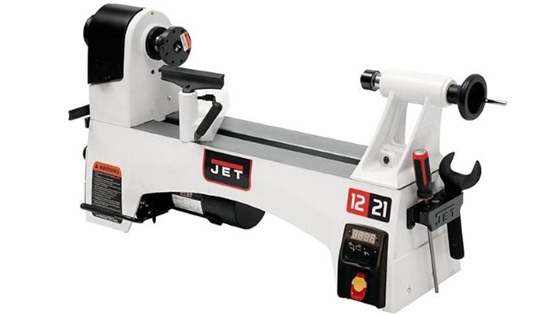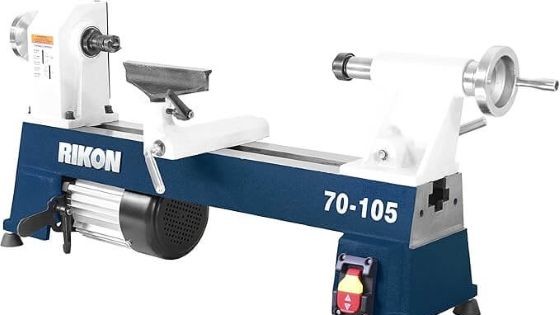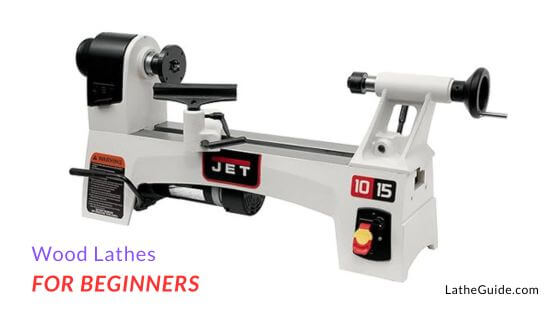Welcome, fellow wood enthusiast! There’s a unique magic in taking a raw block of wood and shaping it into something beautiful and functional on a lathe. Whether you dream of crafting intricate pens, elegant bowls, or sturdy furniture legs, the best wood lathe for your needs is the cornerstone of your woodturning journey.
But choosing the right one can feel overwhelming. With countless models, sizes, and features flooding the market in 2025, how do you pick the perfect partner for your workshop? Don’t worry, we’re here to help. This comprehensive guide will break down everything you need to know – from understanding lathe types and crucial features to detailed reviews of top contenders. Let’s spin things up and find the best wood lathe to bring your creative visions to life!

Understanding Wood Lathe Types: Which Size Fits Your Space & Projects?
Before diving into specific models, it’s essential to understand the main categories of wood lathes:
Mini Lathes
- Description: The smallest and most affordable option, designed for benchtop use.
- Best For: Pens, small boxes, knobs, finials, beginner projects, workshops with limited space.
- Typical Specs: 8-10″ swing over bed, 12-18″ distance between centers.
Midi Lathes
- Description: The versatile sweet spot for many hobbyists. Larger and more powerful than minis, often benchtop but sometimes with optional stands. They offer a significant step up in capacity and stability.
- Best For: Small to medium bowls (up to 12″), larger spindles, platters, serious hobbyists, small professional shops.
- Typical Specs: 12-14″ swing over bed, 16-40″+ distance between centers (often extendable).
Full-Size Lathes
- Description: The largest, heaviest, and most powerful lathes, designed for floor-standing operation.
- Best For: Large bowls, furniture legs, architectural elements, professional production work, those needing maximum capacity and power.
- Typical Specs: 16″+ swing over bed, 40″+ distance between centers.
Key Features to Consider When Choosing the Best Wood Lathe
Beyond size, several features dramatically impact a lathe’s performance, usability, and the quality of your finished work. Here’s what to look for:
Size: Swing Over Bed & Distance Between Centers
Swing Over Bed: The maximum diameter of wood you can turn over the main bedways. A 12″ swing means you can turn a 12″ diameter bowl blank.
Distance Between Centers: The maximum length of spindle stock (like a table leg) you can fit between the headstock and tailstock centers. Look for extendable beds if you need more length occasionally.
Variable Speed Control (EVS is King!)
Being able to adjust speed without stopping the lathe and manually changing belts is crucial for safety and finish quality.
Manual Belt Change: Found on basic models. Requires stopping the lathe to move a belt between pulleys. Less convenient.
Mechanical Variable Speed: Uses levers/dials to adjust speed within ranges (Reeves drive). Better than manual, but can sometimes rob power.
Electronic Variable Speed (EVS): The gold standard. Uses electronics (often with a digital readout – DRO) for smooth, precise speed changes across the entire range, often maintaining better torque at lower speeds. Highly recommended.
Motor Power (Horsepower – HP)
More power allows you to turn larger, heavier, or unbalanced pieces without the motor bogging down.
Mini Lathes: Typically 1/2 HP to 3/4 HP.
Midi Lathes: Often 3/4 HP to 1.5 HP. 1 HP EVS is a great target for midi versatility.
Full-Size Lathes: 1.5 HP to 3 HP or more.
Construction Material (Cast Iron Rules!)
Cast iron beds, headstocks, and tailstocks are essential for stability and vibration damping. Heavier lathes generally vibrate less, leading to smoother cuts and better finishes. Avoid lathes with excessive plastic components in critical areas.
Headstock and Tailstock Taper (Morse Taper – MT)
This refers to the standardized cone shape inside the spindle and tailstock quill, which accepts drive centers, drill chucks, and other accessories. MT2 (Morse Taper #2) is the most common and versatile size for mini, midi, and many full-size lathes, offering wide accessory compatibility. MT1 is typically found on older or smaller mini lathes.
Spindle Thread
The thread size on the headstock spindle determines which chucks and faceplates you can mount. 1″ x 8 TPI (Threads Per Inch) is very common for mini and midi lathes, while larger lathes might use 1-1/4″ x 8 TPI. Ensure accessories match.
Tool Rest & Banjo
The tool rest supports your turning tools. It should be solid, easy to adjust (both height and position via the banjo), and lock down securely without vibrating loose.
Weight
Generally, heavier is better for stability. A solid midi lathe might weigh 100-150 lbs (45-68 kg), while full-size lathes can be several hundred pounds.
Reviews: Our Top Picks for the Best Wood Lathes in 2025
(Disclaimer: This selection is based on market research, feature analysis, user reviews, and overall value as 2025. Prices and availability may vary. Consider checking recent reviews before purchasing.)
1. JET JWL-1221VS – Best Midi Wood Lathe Overall

Overview: The JET 1221VS consistently ranks as a top choice for serious hobbyists and small pro shops. It hits the sweet spot of size, power, features, and rock-solid build quality. Its smooth EVS system and excellent fit-and-finish make it a joy to use.
Key Specifications:
- Weight: Approx. 137 lbs
- Swing Over Bed: 12″
- Distance Between Centers: 21″
- Speed Range: 60 – 3600 RPM (Electronic Variable Speed)
- Motor: 1 HP
- Taper: MT2
Pros: Powerful motor, wide EVS range with digital readout, excellent cast iron construction, smooth operation, forward/reverse switch, innovative ratchet-style belt tensioning.
Cons: Premium price point compared to budget midi options.
Best Suited For: Serious hobbyists wanting a long-term, versatile midi lathe; small professional shops.
2. RIKON 70-105 Mini Lathe – Best Mini Wood Lathe

Overview: For those starting out or focusing on smaller projects like pens and bottle stoppers, the RIKON 70-105 offers fantastic value. It’s compact, well-built for its size, and provides enough power for its intended use.
Key Specifications:
- Swing Over Bed: 10″
- Distance Between Centers: 18″
- Speed Range: 500 – 3200 RPM (5-step manual belt change)
- Motor: 1/2 HP
- Taper: MT2
- Weight: Approx. 75 lbs
Pros: Affordable price, solid cast iron construction for a mini, decent power for small projects, easy to set up and use, MT2 taper is a plus.
Cons: Manual belt changes for speed adjustment, limited capacity for larger items.
Best Suited For: Beginners, pen turners, those with limited space or budget.
3. Grizzly T25920 12″ x 18″ Variable-Speed Benchtop Wood Lathe – Feature-Packed Value Pick

Overview: For woodturners seeking the modern conveniences of electronic variable speed (EVS) and a digital readout (DRO) without the premium price tag, the Grizzly T25920 emerges as a highly popular and compelling value proposition. Often readily available through online retailers like Amazon, this benchtop midi lathe packs essential features into a package that appeals strongly to budget-conscious hobbyists ready to step up their turning game.
Key Specifications:
- Swing Over Bed: 12″
- Distance Between Centers: 18″
- Speed Control: Electronic Variable Speed (EVS)
- Speed Range: Typically ~300 – 3700 RPM
- Readout: Digital RPM Readout (DRO)
- Motor: Often 3/4 HP (Verify specific listing – some configurations might differ)
- Taper: MT2 (Headstock & Tailstock)
- Spindle Thread: 1″ x 8 TPI
- Construction: Cast Iron Bed, Headstock, Tailstock
- Weight: Approx. 90-99 lbs
Pros:
- Excellent Value: Delivers sought-after EVS and DRO features at a very competitive price point.
- Convenient Speed Control: Electronic variable speed makes adjustments much easier than manual belt changes within each range.
- Digital Readout: Allows for precise speed monitoring.
- Solid Construction: Utilizes cast iron for key components, providing decent stability for its class.
- Standard Midi Capacity: 12″ swing and 18″ distance handle a wide range of common hobbyist projects.
- MT2 Tapers: Ensures broad compatibility with common lathe accessories.
Cons:
- Motor Power: The typical 3/4 HP motor is capable but may feel less powerful than premium 1HP midi lathes under heavy load.
- Fit and Finish: May not be as refined or polished as higher-end brands like JET or Laguna.
- Reverse Function Unlikely: Typically not included on Grizzly models in this price range (verify specific listing).
- Requires Belt Changes: Like many EVS lathes in this class, manual belt changes are needed to access the lowest and highest speed ranges.
Best Suited For:
- Hobbyists prioritizing features like EVS and DRO on a tighter budget.
- Woodturners upgrading from a basic mini lathe or manual speed control.
- Users comfortable purchasing tools online (like through Amazon or Grizzly directly).
- Those looking for a capable midi lathe for general-purpose woodturning without needing top-tier power or refinement.
4. WEN 3421 Benchtop Mini Wood Lathe – Top Budget Pick

Overview: If budget is your primary concern, the WEN 3421 offers an entry point into woodturning. It’s surprisingly capable for its price, featuring variable speed (though basic) and an MT1 taper. It’s ideal for trying out the hobby without a large investment.
Key Specifications:
- Swing Over Bed: 8″
- Distance Between Centers: 12″
- Speed Range: 750 – 3200 RPM (Variable Speed Dial)
- Motor: 3.2 Amp (approx. 1/3 HP)
- Taper: MT1
- Weight: Approx. 45 lbs
Pros: Extremely affordable, variable speed control (rare at this price point), compact and lightweight.
Cons: Lower power, MT1 taper limits accessory choices, build quality is lighter than premium brands, variable speed isn’t as robust as EVS.
Best Suited For: Absolute beginners on a tight budget, very small projects.
5. Laguna Revo 1836 – Excellent Full-Size / Heavy Midi Option

Overview: Stepping up significantly in size and capability, the Laguna Revo 18|36 bridges the gap between heavy midi and full-size lathes. Known for its modern design, powerful motor, smooth EVS, and thoughtful features like the pivoting headstock (on some models).
Key Specifications:
- Swing Over Bed: 18″
- Distance Between Centers: 36″
- Speed Range: 50 – 3500 RPM (EVS, range depends on belt position)
- Motor: 1.5 HP or 2 HP options
- Taper: MT2
- Weight: Approx. 400+ lbs (floor standing)
Pros: Massive capacity, powerful motor options, smooth electronic variable speed with digital readout, excellent build quality and stability, advanced features available.
Cons: Significant investment, requires substantial workshop space and power.
Best Suited For: Advanced hobbyists, professional woodturners, those needing to turn large bowls and furniture components.
How to Choose the Right Wood Lathe for You
There’s no single “best” lathe – only the best one for your specific situation. Consider these steps:
- Assess Your Budget: Be realistic about what you can spend, factoring in essential accessories like chucks and tools.
- Define Your Projects: What do you primarily want to turn? Pens require less capacity than large bowls. Spindles require more distance between centers.
- Measure Your Workshop Space: Ensure you have enough room not just for the lathe, but also to stand and move around it safely.
- Prioritize Key Features: Electronic Variable Speed (EVS) is arguably the most impactful feature for usability and finish quality. Solid cast iron construction is crucial for stability. An MT2 taper offers the best accessory compatibility.
Frequently Asked Questions (FAQ)
What is the best wood lathe for a beginner?
Often a good quality Mini Lathe (like the RIKON 70-105) or an entry-level Midi Lathe is ideal. They are less intimidating, more affordable, and sufficient for learning the basics on smaller projects. Prioritizing variable speed, even if basic, is helpful.
What safety gear do I need for wood turning?
Absolutely essential: Full face shield (not just safety glasses), dust mask or respirator (wood dust is harmful), and hearing protection. Avoid loose clothing, jewelry, or gloves that could get caught.
Can I turn metal on a wood lathe?
NO! Absolutely not. Wood lathes lack the rigidity, speed control (they run too fast), torque at low speeds, and proper tool holding required for metal. Attempting to turn metal on a wood lathe is extremely dangerous and will likely damage the machine, the tool, and potentially cause serious injury. Use a dedicated metal lathe for metalworking.
Conclusion: Start Your Turning Adventure
Choosing the best wood lathe is a significant step in your woodworking journey. By understanding the different types, focusing on key features like EVS and solid construction, and considering your own project goals and budget, you can make an informed decision. Whether you opt for a compact mini lathe like the WEN or RIKON, a versatile midi like the JET or Grizzly, or a powerhouse like the Laguna, the right machine will provide years of enjoyment and creative fulfillment.
We hope this guide and our 2025 reviews have helped you narrow down your choices. Now, get equipped, stay safe, and happy turning!




